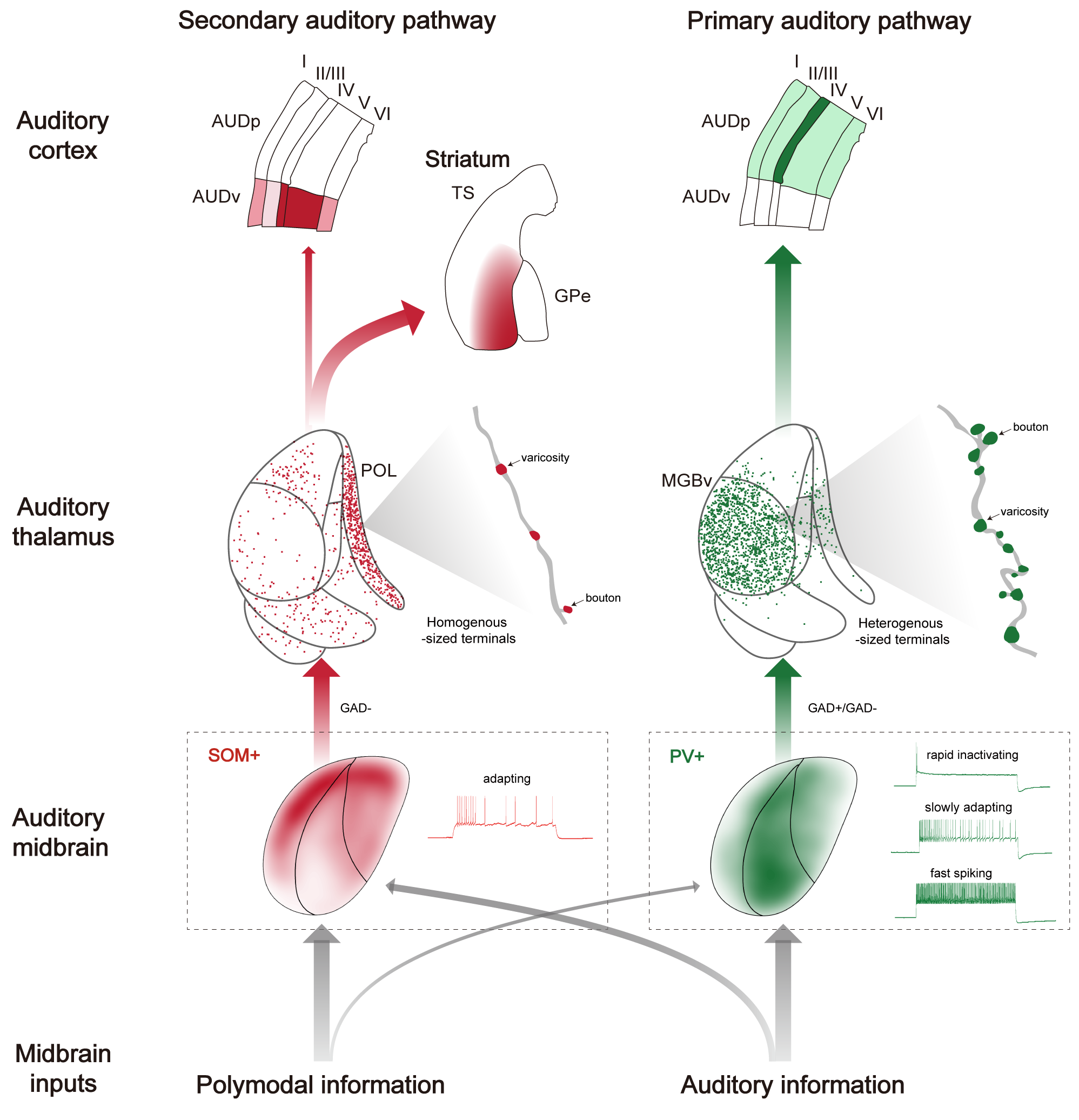Abstract
The inferior colliculus (IC) represents a crucial relay station in the auditory pathway, located in the midbrain's tectum and primarily projecting to the thalamus. Despite the identification of distinct cell classes based on various biomarkers in the IC, their specific contributions to the organization of auditory tectothalamic pathways have remained poorly understood. In this study, we demonstrate that IC neurons expressing parvalbumin (ICPV+) or somatostatin (ICSOM+) represent two minimally overlapping cell classes throughout the three IC subdivisions in mice of both sexes. Strikingly, regardless of their location within the IC, these neurons predominantly project to the primary and secondary auditory thalamic nuclei, respectively. Cell class-specific input tracing suggested that ICPV+ neurons primarily receive auditory inputs, whereas ICSOM+ neurons receive significantly more inputs from the periaqueductal gray and the superior colliculus (SC), which are sensorimotor regions critically involved in innate behaviors. Furthermore, ICPV+ neurons exhibit significant heterogeneity in both intrinsic electrophysiological properties and presynaptic terminal size compared with ICSOM+ neurons. Notably, approximately one-quarter of ICPV+ neurons are inhibitory neurons, whereas all ICSOM+ neurons are excitatory neurons. Collectively, our findings suggest that parvalbumin and somatostatin expression in the IC can serve as biomarkers for two functionally distinct, parallel tectothalamic pathways. This discovery suggests an alternative way to define tectothalamic pathways and highlights the potential usefulness of Cre mice in understanding the multifaceted roles of the IC at the circuit level.

|
Paper Link: https://www.jneurosci.org/content/44/10/e1655232024.long
|
